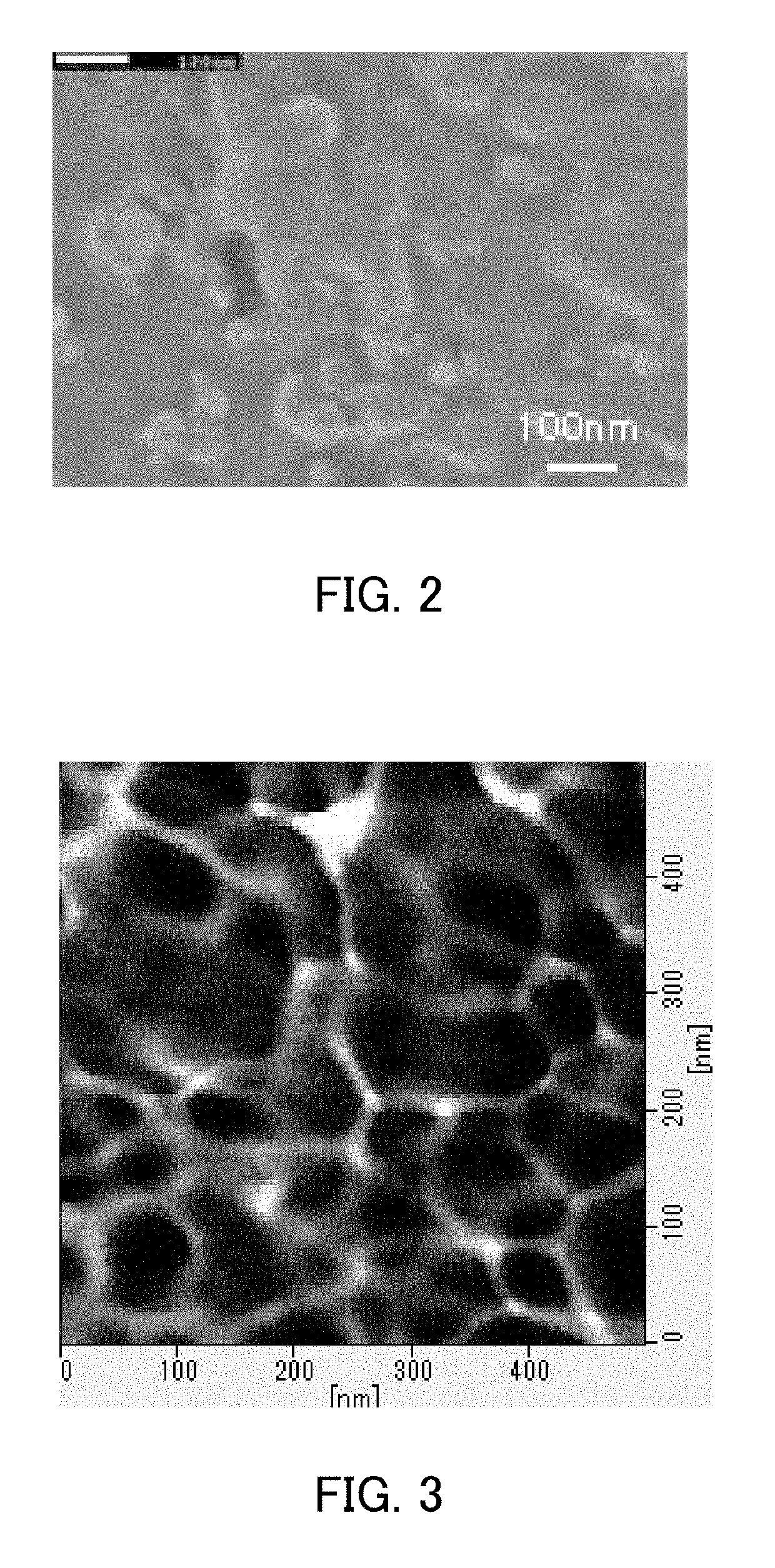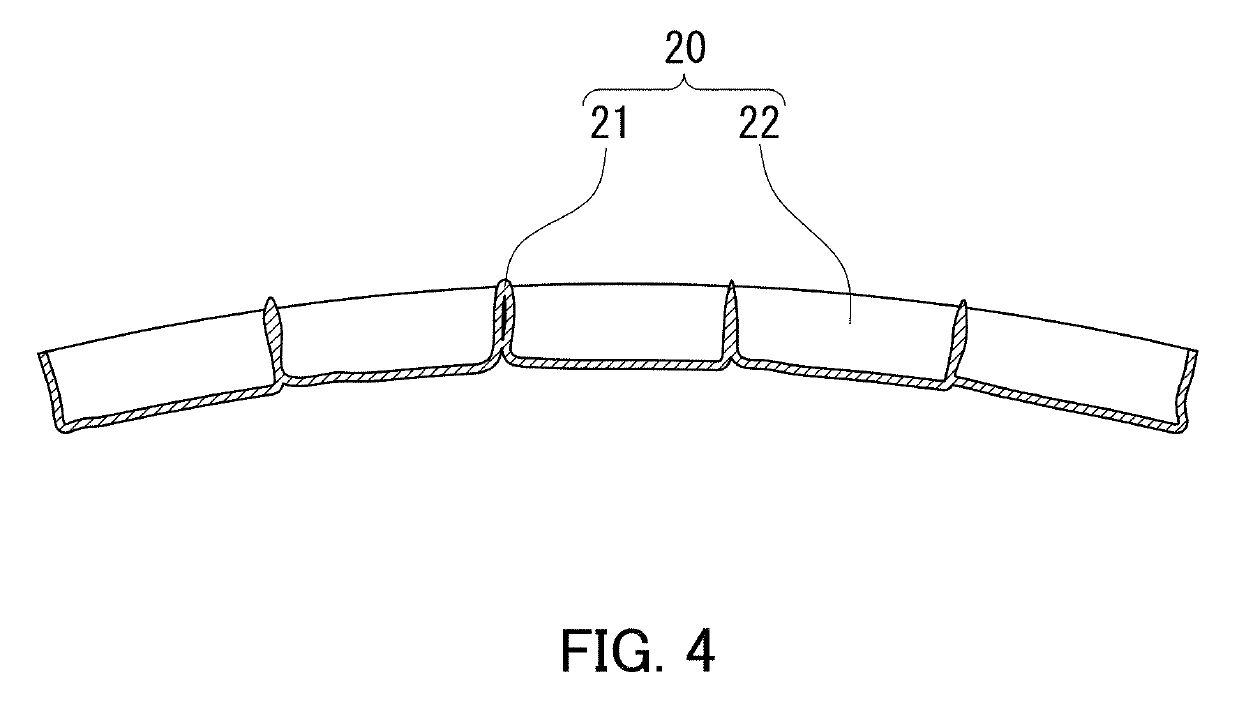Electrostatic latent image developing toner
a technology of developing toner and latent image, applied in the field of can solve the problems of agglomeration of toner particles included in the toner, and achieve the effect of improving the fixability of the electrostatic latent image developing toner
- Summary
- Abstract
- Description
- Claims
- Application Information
AI Technical Summary
Benefits of technology
Problems solved by technology
Method used
Image
Examples
example 1
(Production of Toner Core)
[0120]First, 750 g of a low viscosity polyester resin (Tg=38° C., Tm=65° C.), 100 g of a medium viscosity polyester resin (Tg=53° C., Tm=84° C.), 150 g of a high viscosity polyester resin (Tg=71° C., Tm=120° C.), 55 g of a releasing agent (carnauba wax: Carnauba Wax No. 1 produced by S. Kato & Co.), and 40 g of a colorant (phthalocyanine blue: KET BLUE 111 produced by DIC Corporation) were mixed using an FM mixer (product of Nippon Coke & Engineering Co., Ltd.) at a rotational speed of 2,400 rpm. The resultant mixture was melt-kneaded using a twin-screw extruder (PCM-30 produced by Ikegai Corp.) under conditions of a material input rate of 5 kg / hour, a shaft rotational speed of 160 rpm, and a temperature setting range of 100° C. to 130° C. The resultant kneaded product was cooled and then coarsely pulverized using a pulverizer (Rotoplex (registered Japanese trademark) produced by Hosokawa Micron Corporation). The resultant coarsely pulverized product was fi...
example 2
[0125]A toner of Example 2 was produced in the same manner as the toner of Example 1 except that the suspension of the thermoplastic resin fine particles II was used instead of the suspension of the thermoplastic resin fine particles I in the shell layer formation process.
example 3
[0126]A toner of Example 3 was produced in the same manner as the toner of Example 1 except that the suspension of the thermoplastic resin fine particles III was used instead of the suspension of the thermoplastic resin fine particles I in the shell layer formation process.
PUM
 Login to View More
Login to View More Abstract
Description
Claims
Application Information
 Login to View More
Login to View More - R&D
- Intellectual Property
- Life Sciences
- Materials
- Tech Scout
- Unparalleled Data Quality
- Higher Quality Content
- 60% Fewer Hallucinations
Browse by: Latest US Patents, China's latest patents, Technical Efficacy Thesaurus, Application Domain, Technology Topic, Popular Technical Reports.
© 2025 PatSnap. All rights reserved.Legal|Privacy policy|Modern Slavery Act Transparency Statement|Sitemap|About US| Contact US: help@patsnap.com



